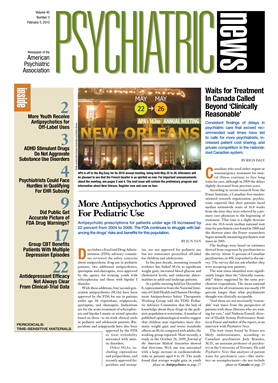The amount of amyloid protein deposited in people's brains may signal the start of Alzheimer's disease, a study reported in the December 2009 Archives of Neurology suggests.
The study was headed by John Morris, M.D., director of the Alzheimer's Disease Research Center at Washington University in St. Louis.
The study included 159 individuals who were aged 51 to 89 (average age 72) and who showed no signs of Alzheimer's or another type of dementia upon clinical assessment. PET scans were used to measure the amount of amyloid protein in their brains. The subjects were followed for eight months to six years (on average two years) and again evaluated for Alzheimer's or other dementias. Comparison of subjects' initial and subsequent clinical assessments indicated that 23 of the 159 subjects had progressed to early mild dementia of either the Alzheimer's or vascular type, and that nine of the 23 had progressed to early mild Alzheimer's.
The researchers evaluated whether the amount of amyloid that the brains of the 23 individuals had contained initially could have predicted their progression to early mild dementia. They found that it predicted such progression for the nine people with Alzheimer's, but not for the 14 with non-Alzheimer's dementia. In fact, the brains of the former contained significantly more (about five times more) amyloid protein initially than had the brains of individuals who remained cognitively normal throughout the study.
Moreover, the nine subjects with Alzheimer's were found to have lost volume in the parahippocampal region of the brain that controls memory. This region also includes the entorhinal cortex, and previous research has suggested that the entorhinal cortex is one of the first brain regions to succumb to Alzheimer's (Psychiatric News, September 1, 2000).
Also of note: although a buildup in amyloid protein predicted Alzheimer's only, older age predicted non-Alzheimer's dementia as well as Alzheimer's.
Since there were only 23 individuals who progressed to mild dementia, and an even smaller number—nine—who progressed to Alzheimer's specifically, the findings need to be replicated in larger groups of subjects, Morris and his colleagues stressed. Nonetheless, the findings “confirm the value of detecting and measuring amyloid load in the brains of... people as soon as possible,” Morris said in a press release. “These imaging tools are an important part of ongoing efforts to create a profile of Alzheimer's in its earliest stages, even before symptoms appear, by linking imaging results with other biomarkers and clinical evaluations.”
“Previous studies of brain pathology, cognitive testing, and brain imaging have for some time suggested that Alzheimer's pathology causes changes to the brain many years before memory loss, confusion, and other symptoms of the disease are present,” National Institute on Aging Director Richard Hodes, M.D., said in the same press release. “But it remains difficult to accurately predict whether a cognitively normal person will or will not develop the disease. These new [results] suggest that beta-amyloid measured in the brains of cognitively normal individuals may be a preclinical sign of [Alzheimer's] disease.”
The study was funded by the National Institute on Aging and the Charles and Joanne Knight Alzheimer's Research Initiative.
